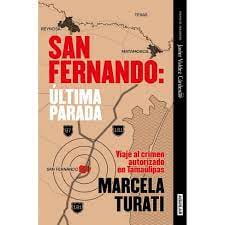A Review of Intimate Enemies: Violence and Reconciliation in Peru
Legacies of Violence

Intimate Enemies: Violence and Reconciliation in Peru By Kimberly Theidon University of Pennsylvania Press, 2013, 461 pages
A little more than twenty years ago, Andeanist anthropologists were taken to task for “missing the revolution.” At the time—the early 1990s—Peru was awash in internecine violence spawned by continued clashes of the Shining Path guerrilla group with the Peruvian army. Peru’s Quechua-speaking peasants were unpityingly trapped between two armies, frequently forced to take sides in self-defense and subjected to monstrous human rights abuses. Students of Andean culture were accused of being too preoccupied with investigating traditional indigenous cultural forms—such as systems of trade and ritual that symbolically and materially linked the Andes’ multiple vertical levels to one another or gender complementarity in Andean cosmology—to notice the imminent approach of armed conflict. Ultimately, Peruvianist anthropologists were themselves caught up in the war, some of them relocating their research sites to the more peaceful haven of neighboring Ecuador. Others turned their ethnographic gaze to the burgeoning refugee populations in Peru’s cities: the war transformed Andean ethnography in profound ways, forcing anthropologists to pay closer attention to the social disintegration it generated. Indeed, anthropologists were probably already moving in that direction when Shining Path erupted onto the public stage. Like their colleagues studying other parts of the world, Andeanists had already begun to shy away from the descriptive ethnography of isolated and culturally homogeneous rural venues and turned to an examination of weighty social issues, such as urban migration, political violence, class tensions, new social movements and racism.
Notwithstanding the social significance of these issues and the extent to which Andeanist ethnography was revitalized by this shift in subject matter, I believe that something vital was lost in our rush to become politically relevant. The Andeanist ethnographers of the past two decades have, to a degree, lost sight of the cultural texture of everyday life in the region, of what gives life meaning for Andean people, even in the face of extreme violence. Our ethnographies have begun to ignore the rich cultural traditions that characterize the region. In a sense, ethnographic writing about the Andes since the 1990s has become markedly thinner, less intense, as anthropologists strive for greater social relevance. Paradoxically, while indigenous organizations throughout Latin America are underscoring the centrality of culture to their political projects, many anthropologists stubbornly choose to ignore the intricacies of indigeneity as something not only constructed by politicians but also lived by people.
In recent years, however, a small number of ethnographic monographs have begun to appear in print that take greater note of Andean cultural specificity at the same time that they focus on many of the central issues facing the people of Andean nations. Kimberly Theidon’s Intimate Enemies is one of the best examples of this trend. As I began reading her book I was surprised at how classically ethnographic it is and how relevant are her descriptions of rural Quechua ways of life, particularly those pertaining to the medical realm to the ethnographic study of human rights. This is evident, for example, in Theidon’s insistence on comprehending the layers of meaning that Quechua-speaking peasants of Ayacucho, Peru, associate with suffering; she examines how a series of Andean concepts—notions like llakis and susto indicating physical reactions to extreme stress—exceed and overflow the idea of trauma as it is articulated by human rights workers in Peru. To label the populations who suffered the depredations of the army and Shining Path as “victims” is, maintains Theidon, to ignore how native people experienced the war on their own terms and to foreclose any possibility of true reparations and reconciliation in the post-conflict period. Moreover, Theidon does not confine her study of victimhood to concepts that we would define as explicitly “Andean,” but approaches the people she is studying as complex modern actors, whose social practices evince a melding of Andean tradition and global movements. She offers, for example, a thoughtful and respectful portrait of rural Protestantism as a means of confronting the horror caused not only by external actors, such as the Peruvian army or Shining Path, but by community members themselves, who, Theidon lucidly recounts, were complicit in the bloodshed when forced to take sides in the conflict.
Theidon’s meticulous ethnography in the first part of Intimate Enemies clearly lays the groundwork for her subsequent examination of how peasants learned to live with one another despite remembering that their neighbors were murderers. But her ethnographic approach provides more than just background information. Theidon cogently demonstrates that a classic Andeanist style of doing ethnography is necessary for comprehending the nature and impact of the Ayacucho bloodbath. An awareness of Andean worldviews is essential to her objective of capturing the texture of memory, observed in people’s silences as much as their narratives. It is at the heart of peasant recollections of what Theidon terms the “militarized masculinity” of armed actors who blew apart their communities. It also makes more comprehensible the practices that made community authorities complicit in the violence and the strategies people still follow to persevere as a community despite the horror that came from within. This rich ethnography is part of what makes Intimate Enemies significantly more thoughtful than many contemporary anthropological studies of violence.
What happens when community members who have been forced to take sides in the armed conflict narrate their stories to truth commissions? Is there a gender dynamic at work in the ways that people recall their victimhood or their heroism? Do men and women recount their experiences of conflict in distinct ways? What does this tell us about how truth and reconciliation commissions should operate if they are to be effective? Fiona Ross’s landmark study of gendered narrative in the South African Truth and Reconciliation Commission, Bearing Witness (Pluto, 2003), substantiates the assertion that truth commissions narrow the narrative space in which women are able to recount their experiences. Intimate Enemies builds on this in very significant ways, by examining not only formal testimony but also engaging in an ethnographic analysis of the gender dynamics of local focus groups in the Andes. Theidon found that while men strove to silence women’s narratives of violent abuse—especially rape—women preferred to focus instead on their everyday experiences coping with communal dissolution, scarcity, and fear, remembering not only the anguish of bearing children conceived in acts of sexual violation, but, also how they fought back against the rapists.
Theidon’s work sharpens our understanding of what it means to live side by side with one’s enemy. The second half of Intimate Enemies probes the nature of post-conflict social relations in two regions of Ayacucho: the north, where communities welcomed the army and openly repudiated Sendero, but were nevertheless victimized by the Peruvian army; the south, where indigenous people tended to support Shining Path and in the post-conflict period were forced to deny both their earlier political leanings and accept as equal citizens those among them who had collaborated with the guerrilla movement. The post-conflict “traumas”—that Theidon unpacks in the first part of Intimate Enemies—work out differently in these two settings, and she provides us a fascinating look at how social relations were repaired through a process of suppressing memory, in the course of the dispersal of some of the actors to nearby cities, and through constant attempts to silence the angry voices of those who were most brutally victimized (particularly, the women). I think that Theidon’s ethnography is much more effective in Part III of the book than in Part IV, perhaps because she spent more time in the north; the ethnographic narratives of Part III move fluidly between interviews and Theidon’s own experience, while in Part IV they cleave more closely to an interview format. Nevertheless, Part IV is critical to her argument, because it is here that Theidon resolves some of the issues she has brought up in the course of her ethnography, particularly the nature of gendered anger and what happens when women’s memories are suppressed.
I suspect that the intensity of Theidon’s writing comes in part from her obvious talent as an ethnographer, but it is also the product of decades of engaged research she has conducted in Ayacucho in the course of her collaboration with the Peruvian Truth and Reconciliation Commission. She clearly demonstrates that anthropological engagement not only makes significant contributions to society, but also makes for better ethnography.
Spring 2014, Volume XIII, Number 3
Joanne Rappaport is a Professor of Anthropology and Latin American Literature at Georgetown University. She is the co-author, with Tom Cummins, of Beyond the Lettered City: Indigenous Literacies in the Andes (Duke, 2012).
Related Articles
A Review of Default: The Landmark Court Battle over Argentina’s $100 Billion Debt Restructuring
In February 2019, I found myself serving as the special attorney general for the then newly recognized interim government of Venezuela, tasked with addressing more than 50 claims before the U.S. courts stemming from the $140 billion debt inherited from Hugo Chávez and Nicolás Maduro.
A Review of Until I Find You: Disappeared Children and Coercive Adoptions in Guatemala
A student in my “Introduction to Cultural Anthropology” course at the University of Delaware approached me several weeks ago, after hearing about my long-term research in Guatemalan communities, to tell me that they were born there, in Guatemala.
A Review of San Fernando: Última Parada, Viaje al crimen autorizado en Tamaulipas
One of Mexico’s best investigative journalists, Marcela Turati, takes readers to terrorized and traumatized San Fernando, a town known for dozens of mass graves, and exposes the depths of criminal brutality and official corruption that hid the bodies and the truth for years.




